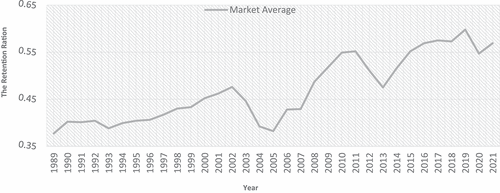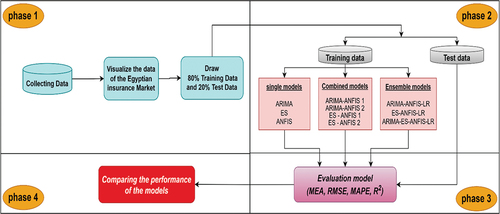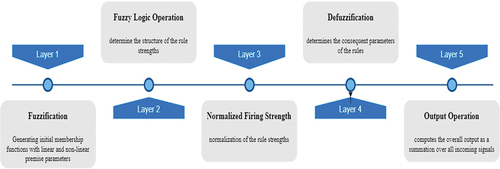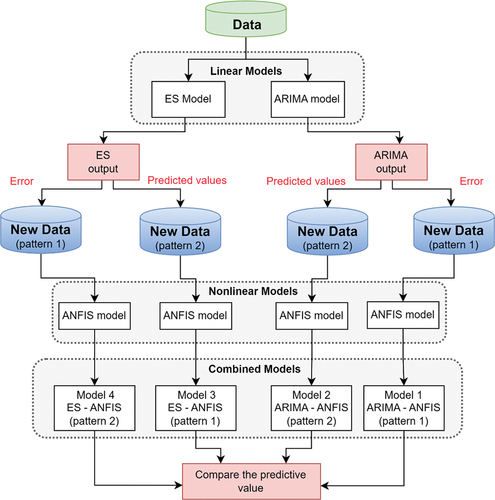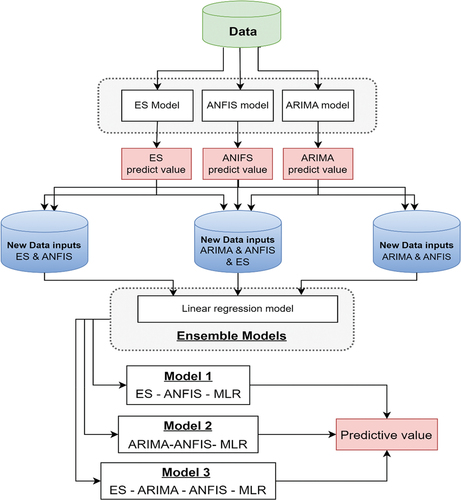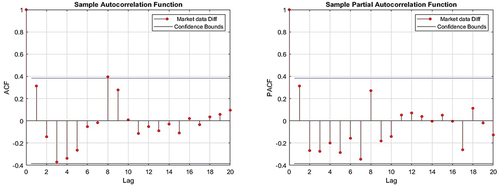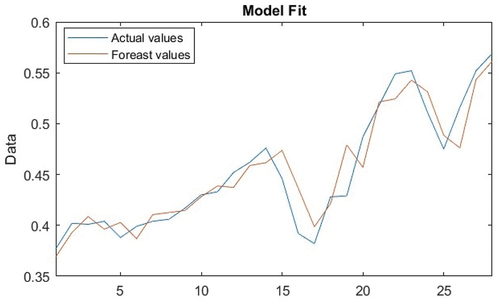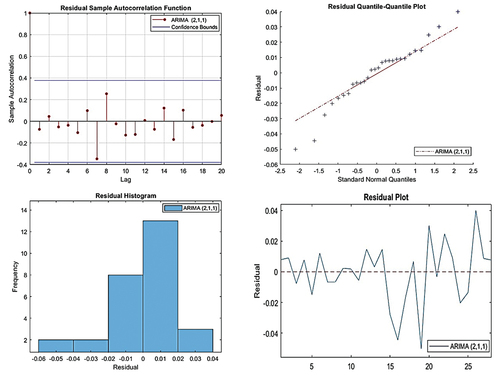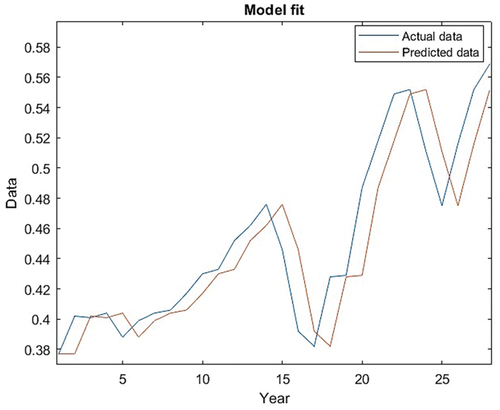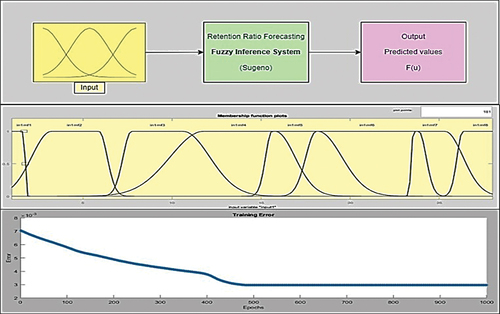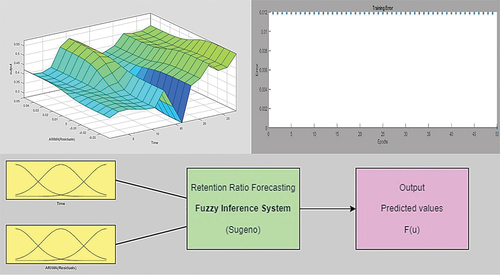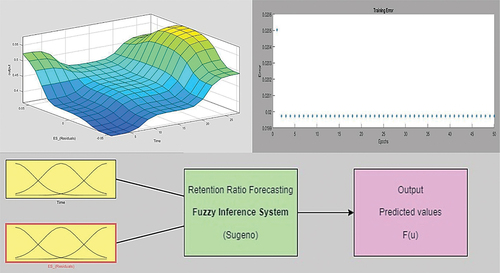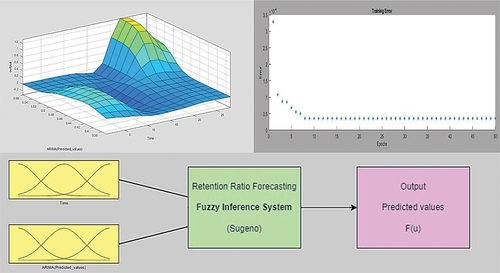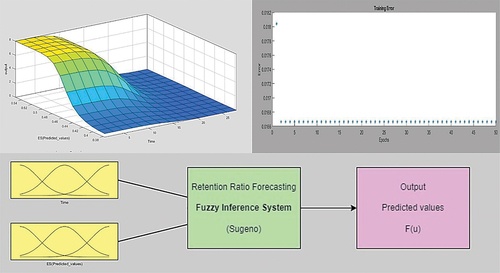Figures & data
Table 1. Descriptive statistics of the premium retention ratio of Egyptian insurance market.
Table 2. The optimal parameters of statistical time series models.
Table 3. The goodness of fit measure of ARIMA models.
Table 4. The parameters of the ARIMA (2,1,1) model.
Table 5. The accuracy measure of the best ARIMA and ES models.
Table 6. The parameters of the best ANFIS model.
Table 7. The accuracy measure of ANFIS model.
Table 8. The accuracy measure of first pattern of combined model (ARIMA-ANFIS).
Table 9. The accuracy measure of first pattern of combined model (ES-ANFIS).
Table 10. The accuracy measure of second pattern of combined model (ARIMA-ANFIS).
Table 11. The accuracy measure of second pattern of combined model (ES-ANFIS).
Table 12. The accuracy measure of ensemble models.
Figure 15. The comparison of all predictive models (a) single models (b) combined models (c) ensemble models.
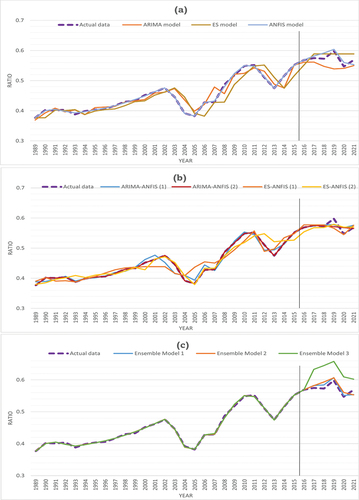
Table 13. The comparison between all the models.
Biographical file.docx
Download MS Word (98.7 KB)Data Availability Statement
The data that support the findings of this study are publicly available on their website (https://fra.gov.eg).

